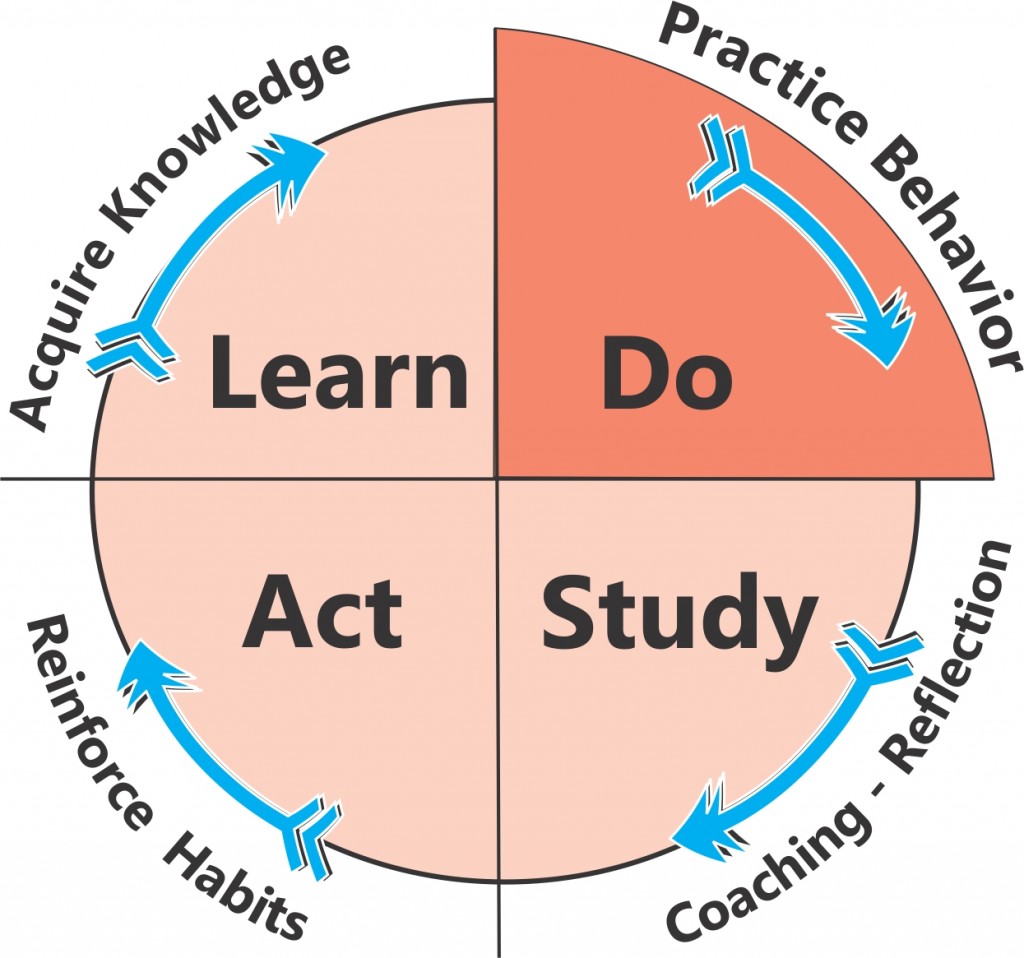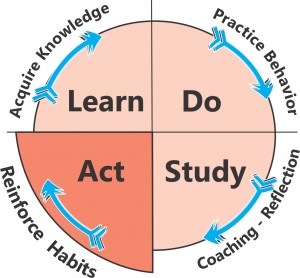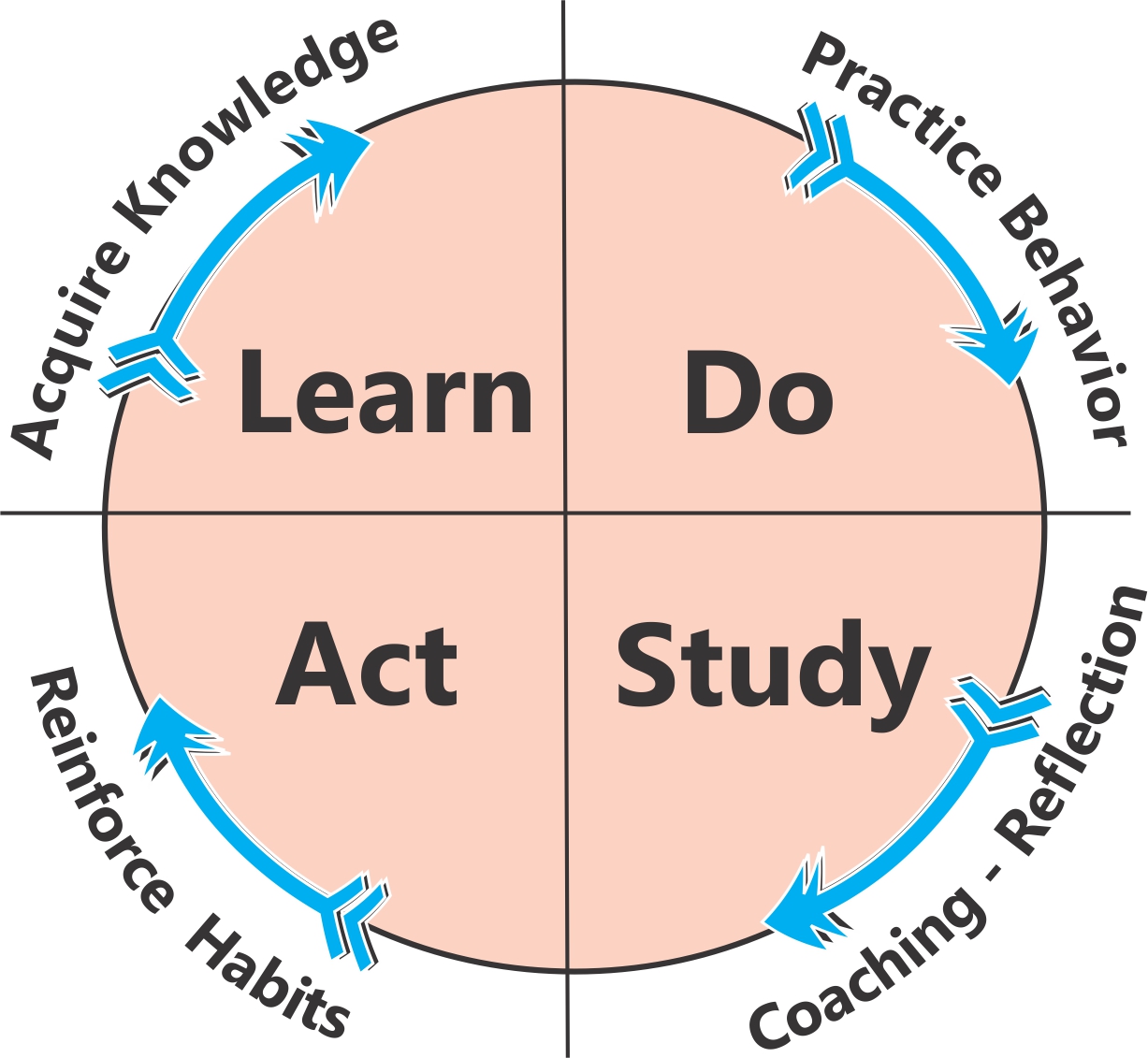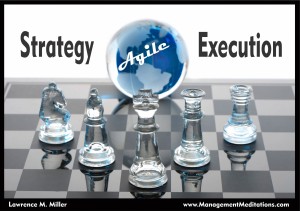The world of corporate training and development has yet to fully embrace the new reality of technology, online resources, and the need to integrate learning into the daily habits of all managers and team members.
Just as colleges and universities are struggling to confront out-of-control costs and the integration of new technology, corporate training and development must also adopt a new paradigm to deliver competence and capabilities to their customers.
Lean Systems of Corporate Training
Forbes Magazine just completed their annual research on corporate training. Last year spending increased 15% to $70 Billion in the US and $130 Billion worldwide. The number one area of spending is on management and leadership development – 35%. That equals $24.5 Billion in the US and $45.5 Billion worldwide for management and leadership development training.
Why? Forbes stated:

From Forbes 2/02/2015
Two other significant findings by Forbes: High performing companies spend more and “technology is revolutionizing this market.”
“The research shows an explosive growth in technology tools to train people today. Self-authored video, online communication channels, virtual learning, and MOOCs (Coursera, Udacity, Udemy, edX, …) are all growing rapidly as training tools. People still need formal classroom education, but this is now less than half the total “hours†people consume in training around the world. And among the highly advanced companies, as much as 18% of all training is now delivered through mobile devices.”
The New World of Training and Development
So, what is the problem? The problem is that much of these expenditures are anything but “lean.” Specifically:
- Many corporate trainers, internal and external, are wedded to the old model – “Send them to me and I will talk and they will do exercises, we’ll have great coffee breaks, go home, and it is their problem what happens after that. I’ve done my job!” In other words, it is “silo-ed” and lacking a continuous process flow that begins with a defined need and ends in proof of performance.
- Leaders send subordinates to training and expect them to be “fixed,” with little acceptance of responsibility for coaching and observing demonstrated competence in a defined skill.
- Learners go to training or watch online courses with little understanding that they are responsible for performing, demonstrating competence, and adding value. This is not their fault. It is the fault of the system – the absence of accountability and consequences.
The solution is a system that creates value and returns the investment, which must include the following elements:
- Line managers must define, with the help of training professionals, competency-based training that builds specific skills that will then be used and coached on the job.
- Participation in online learning, whether through internal learning management systems or MOOC’s like Udemy, should not simply be a do-it-yourself “go watch this and learn something” model. On the contrary, courses should be watched on the individual’s time, but an entire team of managers should participate together, with an internal coach facilitating the application of learning in the real world environment. Learning comes from doing, not watching!!
- It is a new, but old, paradigm. Learning must be managed and not left to chance. Each manager must be responsible (that means held accountable) for the development of her people. They must be given a system of learning for which they can be responsible.
“Institute a vigorous program of education and self-improvement.” Dr. Deming’s 13th point.
AÂ System of Organizational Learning
Let me suggest how a “lean” learning system might work. The purpose of this model is to both incorporate the efficiency of online learning technology while at the same time understanding that learning occurs through applied action, iterative experimentation, coaching (feedback) and consequences to behavior.

 Antecedents
Organization leadership has the responsibility to establish the conditions for purposeful learning. These include the following:
- A Strategic Capability Model that Defines Cultural Competencies: Where are we going, why, and what capabilities do we need to get there? Organizational learning is not an act of personal fulfillment. It must be made purposeful by a strategic model that defines the capabilities, technical and social, that the organization must possess to succeed in the future.
- Leadership Responsibility: Just as each unit of the business is held accountable for budget items, achieving targets of productivity or sales, the same business unit leaders must be equally responsible for building the human capabilities that will lead to the fulfillment of strategy.
- Structure and Systems: To establish a system of learning, the structure, systems and tools must be put in place by leadership. The online learning system needs to be established or purchased. The structure of internal coaches who will follow up and counsel managers on their application of lessons learned in online programs is essential to the process.
 The Action-Learning Process
If you were told that you were being sent to a three day workshop on how to play the guitar, and after that you were expected to perform before an audience and win their applause, you would rightly consider that a very bad idea! But, that is how much our training dollars are spent. Action learning is entirely different, and it is the natural way one learns any skill: a little knowledge – a little practice – a little feedback and reflection – then more advanced knowledge, practice, etc. And, all the practice is performed in the natural work setting of the learner.
This diagram will look somewhat familiar to all who have employed the Plan-Do-Check-Act cycle, and it is similar in its iterative learning and experimentation process. However, it is adapted specifically to management and leadership development.
  1. Learn: Acquire Knowledge
1. Learn: Acquire Knowledge
In traditional learning models this is where most of the time, attention and costs went. No longer. This is the easy part. This is where online learning changes everything. To use my own course as an example, the individual can learn the problem solving models, process management, the skill of developing scoreboards, solving human performance problems, and facilitation skills while sitting at home in the evening or at Starbucks on their tablet. The knowledge is all there. In the case of my team leadership course, there are 17 hours of lectures broken into 74 separate lectures. It is enough for one full year of management development when combined with the other three elements.
 2. Do: Practice the Behavior
 To take the example of learning the guitar, as anyone who has tried knows, the essential step in real learning is building the habits through practice. Learning management and leadership skills are no different. Effective communication and facilitation, for example, is a skill comprised of a set of habits. We know what those habits are. The knowledge is relatively simple. But, developing the habitual behavior of listening well, inquiring sincerely before judging, or acknowledging the contribution of others, is less about knowledge than habit.
To take the example of learning the guitar, as anyone who has tried knows, the essential step in real learning is building the habits through practice. Learning management and leadership skills are no different. Effective communication and facilitation, for example, is a skill comprised of a set of habits. We know what those habits are. The knowledge is relatively simple. But, developing the habitual behavior of listening well, inquiring sincerely before judging, or acknowledging the contribution of others, is less about knowledge than habit.
Where does the manager practice these skills? The best place is right where he or she works – in their own work or management team. One might expect this to be uncomfortable. However, if the team is learning together, all trying out new behavior, the performance anxiety is minimized.
3. Study: Coaching & Reflection
 At Toyota every manager has a coach. Every leader is developed through a period of years by learning, doing and coaching. It is the norm. However, while almost every company is striving to adopt lean manufacturing or culture, few are taking the coaching practice seriously. There is something in our culture that causes us to say “I’m OK, I can do it myself, I don’t need a coach!” Tom Brady has a coach. Peyton Manning has a coach. But, our managers too often think they don’t need one!
At Toyota every manager has a coach. Every leader is developed through a period of years by learning, doing and coaching. It is the norm. However, while almost every company is striving to adopt lean manufacturing or culture, few are taking the coaching practice seriously. There is something in our culture that causes us to say “I’m OK, I can do it myself, I don’t need a coach!” Tom Brady has a coach. Peyton Manning has a coach. But, our managers too often think they don’t need one!
Coaching is giving feedback on how you are performing a specific skill. It is not asking the same questions over and over again. It is asking questions about the application of the specific skill you are learning and practicing at that time. A skilled coach follows a learning path in support of the acquisition of knowledge, and the sequence of practice. As an example, I have defined a sequence of activities and related coaching questions that follow my Team Leadership course.
4. Act: To Reinforce Habits
 It is the responsibility of leaders to reinforce the learning of those habits and skills that comprise the capabilities that will lead to strategic success. Ultimately, you get what you reward!
It is the responsibility of leaders to reinforce the learning of those habits and skills that comprise the capabilities that will lead to strategic success. Ultimately, you get what you reward!
It is unfortunate that many leaders do not see the connection between reinforcing those skills for which the organization is providing training, and achieving a return on those training dollars. I can’t tell you how many times I have seen a huge investment in culture change efforts, only to see the promotion of someone who everyone knew had displayed behavior contrary to that which the leaders professed to support. Nothing is more discouraging.
When new management skills are learned by a critical mass of the organization’s members, those management practices become standard work. They should be identified as standard work in fulfillment of a competency model for that job. At that point they become part of the culture.
 Consequences
Ever since my days early days setting up a free economy behind prison walls, I have been a great believer in the power of consequences to influence behavior. The culture of training and development was, for too long, one in which measurement of outcomes, changes in behavior and performance, were not seen as part of the process. Trainers were comfortable in the silo of training departments, and were content to hand-off a trained individual to line management and consider their job complete. This silo must be broken.
- Measure Cultural Competence: Leadership and management training can demonstrate changes in behavior on the job. I have long had assessments and accountability measures for training in team leadership and lean leadership skills. Those measures include the direct application of the skills to improve operating performance.
- Leadership Accountability for Modeling Behavior: If you want your managers to practice good process management or problem solving skills, the leaders must model that behavior. Only that modeling will demonstrate its importance and instill the belief that those skills pay-off.
- Reinforce Demonstrated Performance: Those implementing lean management have largely ducked the issue of reward systems. Why? Rewarding desired behavior gets you more desired behavior. Yes, it can sometimes be complicated or not perfectly “fair.” No reward system is. But, in one Merck plant, for example, as they went through the team leadership training a set of deliverables were identified, and the annual plant bonus, for both salaried and hourly employees, were tied to the completion of those deliverables. It was a strong motivator!
Whether you agree with all of the elements of the system proposed above is not critical. What is critical is that we rethink the system of learning in our organizations to eliminate waste and gain maximum benefit. I believe the above elements will move most organizations in that direction.










Larry – spot on and well done!
Good article, having worked in middle management I have seen the exact issue in play, I have been fortunate to have had mentors and that learning experience has stayed with me and developed my skills far more than training courses i have attended only for the bit of paper and theres no chance of me being able to even recall what they were about. Training courses are often highly priced, and completed to meet ‘budget’ allocations with no expectation of implementing or changing anything within workforce.
Leaders must be the enablers of change. Regardless of method, if the firm is not organized to promote and absorb what’s required, nothing training will stick. My firm delivers training for product managers and leaders of product organizations. When leaders from all functions receive the first round of training, they become familiar with the content and learn what’s required of them to enable the product managers and others with whom they work. Then, when individual contributors are brought through the program, they’re connected to what the bosses have been taught. In fact, when bosses attend the same training, there’s a greater chance that a practice will be adopted.